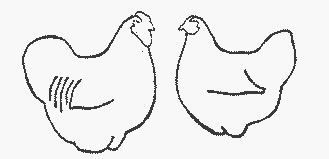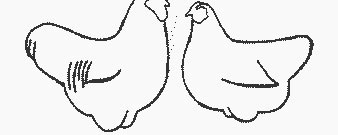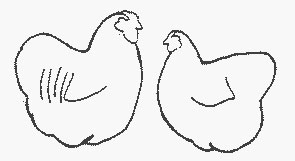
|
Currently there are no events or updates to display.
|
|


Wyandotte Type Illustrations
|

|
| Lacks symmetry. Long in back, poor tail shape, tail breaks abruptly. |
 |
| Lacks fullness of breast and depth of body. |
 |
| Short in back, too much fluff, loose feathered (cochiny). |
 |
| This illustration demonstrates ideal Wyandotte type. It is an illustration of how a well balanced bird actually relates to a circle. |
Originally published: 12-06-2006
Last updated: 03-03-2008
|
|
|
|


